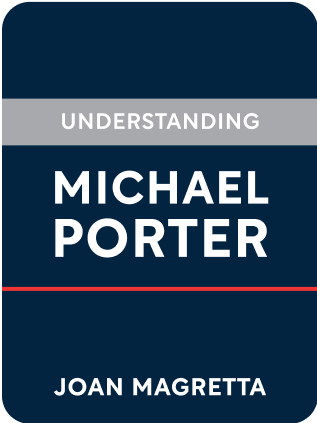

This article is an excerpt from the Shortform summary of "Understanding Michael Porter" by Joan Magretta. Shortform has the world's best summaries of books you should be reading.
Like this article? Sign up for a free trial here .
What is the bargaining power of buyers in Michael Porter’s 5 forces? How can it help you develop a business strategy?
The bargaining power of buyers is determined by the people who pay for your product. How strong of an influence they have determines how much you can charge for your products. The more power your buyers have, the less powerful your strategic position.
The Five Forces and the Bargaining Power of Buyers
Why are some industries consistently more profitable than others? What makes information technology so stereotypically profitable, while airlines are a cutthroat, low-margin grind? The bargaining power of buyers might have something to do with it, and Porter’s five forces buying power can explain some of this phenomenon.
When trying to find an answer, it’s tempting to focus on the competition between rivals. But the bigger is picture than this. Rivals aren’t just competing with each other. They’re also engaged in a struggle for profits with all the other players in the ecosystem – like customers, who would always like to pay less and get more, and are eager to substitute a product for a better alternative. Porter’s five forces buyer power can explain how buys influence markets.
To see an industry holistically, consider Porter’s famous Five Forces. The Five Forces that matter in any industry are:
- Buyers
- Suppliers
- Substitutes
- Incumbents
- New entrants
The more powerful the force, the more pressure it will put on decreasing prices or increasing costs, or both.
We’ll examine Porter’s five forces buying power, considering scenarios in your advantage as an incumbent. Scenarios in your disadvantage are usually the inverse of advantageous scenarios, so only notable alternatives will be listed. In this case, we’ll be looking at the bargaining power of buyers.
Note that every adjacent industry has its own Five Forces, so that their relative disadvantage can be your gain (e.g. a fragmented supplier group is bad for suppliers but good for you).
Force 1: Buyers
So what is the bargaining power of buyers? How much influence do buyers have over a business’s profits, and it’s strategy?
What this is:
- Customers who pay for your product
- Channels that influence the purchase decisions of end-users
- Retailers like Home Depot, Amazon
- Advisers like doctors, investment managers
What it does:
- Lowers prices, since powerful buyers will demand lower prices or else
- Increases costs, since powerful buyers demand more value or else
Scenarios in your advantage:
- If you’re large relative to buyers (i.e. buyers are fragmented)
- Truck maker Paccar appeals directly to individual owner-operators through comfort and customization, rather than brands like Peterbilt that appeal to large corporate buyers (more consolidated).
- High switching costs to your competitors
- Risk aversion dissuades buyers from trying new things.
- Habits get people accustomed to your product.
- Low switching costs to you
- Information asymmetry – inability to price compare, measure quality
Scenarios in your disadvantage:
- Price sensitivity by buyers. This is more likely when your industry’s products are:
- Undifferentiated
- Expensive relative to the buyer’s other costs
- Inconsequential to the buyer’s own performance
- Buyers are consolidated relative to you and competitors
The bargaining power of buyers needs to be a central point of your business strategy. You can understand the bargaining power of buyers in the context of the five forces to build your strategy.

———End of Preview———
Like what you just read? Read the rest of the world's best summary of Joan Magretta's "Understanding Michael Porter" at Shortform .
Here's what you'll find in our full Understanding Michael Porter summary :
- How Porter's famous Five Forces help you analyze every industry
- How IKEA, Southwest Airlines, and Zara have ironclad, defensible strategies
- Why the best companies reject opportunities to focus on what they know






